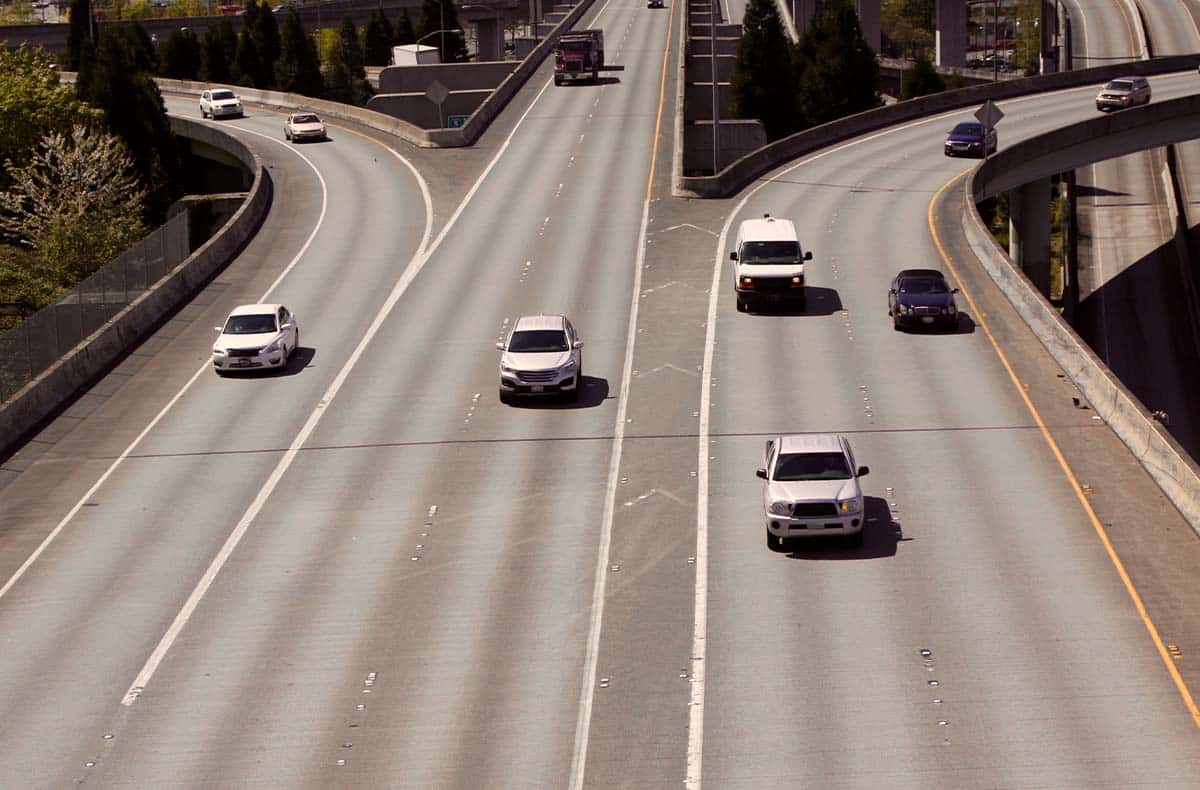
Every summer, my Mom, Dad, and I drive to Wisconsin to visit family. Here we are on a long straightaway stretch of the drive. Mom navigates. Dad drives. I look out over Dad’s shoulder.
A quarter of a mile ahead of us is the only other car on this 4-lane stretch. The car is in the far left lane… with its left turn signal on.
After watching the hypnotic left turn signal for a few miles, Dad points out this “idiot” behavior. I should note here that my Dad attributes every poor driving action to two things: sobriety and gender.
“Look at this idiot….driving in the left lane with their left turn signal on. Probably drunk. And probably a woman.”
Dad doesn’t seem to notice he’s outnumbered two sober women to one sober man… read the car, Dad! Jeesh! Dad takes action and closes the gap between our car and the “drunk woman’s” car. Once adequately tailgating “her,” he moves his turn signal lever down and then up, down and then up, down and then up.
“What are you doing Dad?”
“Letting this idiot know her turn signal’s on.”
“No: now it just looks like two idiots with their turn signals on.”
“Oh.”
Refusing to contribute to the idiot quotient on the road, Dad stops manually engaging his left turn signal, then pulls up next to the other car (not using his turn indicator in the process) and gives the driver, who is sober, and a man, the international sign for “your turn signal is on”—an alternating flash of fist and open hand. If this doesn’t sound familiar, it’s because it’s the international sign for “your turn signal is on” only according to my Dad.
The driver looks over and confirms my Dad’s insanity, speeds up and accelerates out of view, probably muttering about “that idiot” in the car next to him.
Dad’s turn signal indicator indications are well-intentioned and make sense to him, but not necessarily to anyone else.
You ever notice someone on the road and wonder, “What the hell are they thinking?” Maybe they’re not thinking, or maybe they’re doing some well-intentioned (in their humble opinion) maneuver that only they comprehend.
Whenever I’m out driving, I try to think about how my actions on the road might be interpreted differently by others, and whether others see my behavior for the well-intentioned acts that they are. I also try to assume the best in other drivers, despite how difficult some other drivers make that. If I’m trying to change lanes and the idiot in the lane I’m trying to get into speeds up, I try (dear Lord, do I try) to assume that perhaps he’s accelerating in an effort to create a gap in between his car and the car behind him.
And sometimes, I may be giving other drivers a benefit of a doubt that is really a faint shadow of a whisper of a doubt. Because I know there are drivers out there minding their own business without a car in the world about anyone else. We need to watch out for them too because no matter how well-intentioned our actions might be, if no one’s paying attention to them, it’s all for naught.
The roads would be a better and safer place if we were all a little kinder, observant and well-intentioned.
Think about when you merge onto a highway. First off, let me tell you there are way too many videos, how-tos and instructional brochures on the right way to merge onto a highway. The most crucial phase is the acceleration lane, a paved space created by the Department of Transportation to provide the merging car an opportunity to speed up in order to safely merge into traffic.
And per all the well-intended instructional aids on the internet, that’s the time the merging vehicle accelerates toward the speed of the vehicles already on the highway. The merging driver should stay aware of their surroundings, assess the traffic conditions, use their mirrors, keep their head on a swivel to pay attention, find their gap and smoothly join the flow of traffic already in progress. That includes being aware of blind spots they know about while being alert to blind spots they may not know they have.
Oh, and don’t forget to use the turn signal.
The acceleration lane, when used properly, increases the speed on the freeway, reduces delays and congestion, increases safety, decreases conflicts and increases the highway’s capacity and efficiency. We’ve all seen “that” driver who uses the acceleration lane to reach escape velocity in an effort to bypass every other driver on the road, while bypassing every rule of traffic, etiquette and common decency. There’s also a more-recognizable international signal for that move and it’s not an alternating flash of fist and open hand.
The traffic already on the freeway, even though they have the right of way, has some obligations, too. They need to keep their speed up, create a gap for the merging traffic, or even move over to create space. All in all, they need to pay attention, be alert and be kind.
I offer these driving tips in an effort to improve the general driving skills of everyone on the road. I also offer these driving tips as an analogy to think about how we integrate ourselves into a new organization, social circle, work environment, or even just a conversation in progress.
We need to know and abide by the rules of the road and the culture of the organization. Even more importantly, we need to be considerate of the other members of the group into which we’re integrating. And, per this well-intended instructional aid on the internet, as we integrate into a new environment, we can create our own acceleration lane. That’s the time we accelerate toward the speed of the people already in the group. We need to stay aware of our surroundings, assess the conditions, keep our heads on a swivel to pay attention, find our gap and smoothly join the group already in progress. That includes being aware of blind spots we know about while being alert to blind spots we may not know we have.
And just because the people in the existing association, group or conversation have the right of way, we all have obligations to pay attention, be alert and be kind. If life is a highway, and you’re driving this way, I will wanna drive it all night long.
Whether you’re merging onto a freeway or an organization or are already in the lane or organization as others join, pay attention, be alert and be kind. And don’t forget to use your turn signal. And for the love of my Dad, don’t forget to turn it off.



